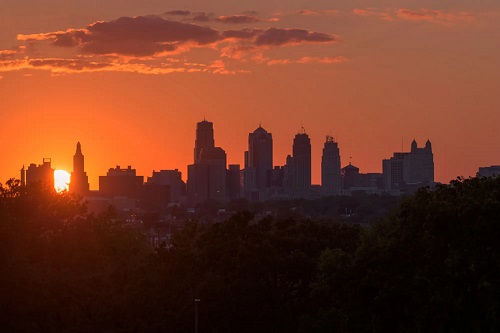
3.17.22 – Kansas City, Mo.
In a display of bipartisan cooperation, the Senate voted Tuesday to make Daylight Saving Time permanent. The Sunshine Protection Act, which received overwhelming support, would ensure that we spring forward one last time in March 2024 and never “fall back” again.
The bill now heads to the House where it still needs approval in that chamber and a signature from President Joe Biden to become law.
While it’s easy to say “permanent Daylight Saving Time,” what would that actually mean and how would it affect our lives? Permanent daylight saving time has been tried before – and it didn’t go well
Currently, Standard Time runs from the first Sunday in November through the second Sunday in March — only this time would see a change. The rest of the year we’re already in Daylight Saving Time, so we wouldn’t be impacted.
Here are some key dates and sunrise/sunset times in Kansas City if the United States eliminated Standard Time:
(Note these are approximate as sunrise/sunset times change slightly from year to year.)
Key sunrise dates/times
- First 8 a.m. sunrise: Nov. 14
- Latest sunrise: Dec. 30-Jan. 11, 8:37 a.m.
- Last 8 a.m. sunrise: Feb. 22
Key sunset dates/times
- Earliest sunset: Dec. 2-12, 5:55 p.m.
- First 7 p.m. sunset: Feb. 20
Other key dates/times
- Thanksgiving: 8:10 a.m. sunrise, 5:58 p.m. sunset
- Christmas Day: 8:35 a.m. sunrise, 6:01 p.m. sunset
- New Year’s Day: 8:37 a.m. sunrise, 6:06 p.m. sunset
- Feb. 1: 8:25 a.m. sunrise, 6:38 p.m. sunset
- March 1: 7:50 a.m. sunrise, 7:11 p.m. sunset
Key takeaways
It’s important to note that we wouldn’t be gaining an extra hour of sunshine under this plan. We’re just moving it from the morning to the evening.
The biggest change we would see under a permanent Daylight Saving Time is sunrise times during the winter. The sun wouldn’t rise until after 8 a.m. for several months, with the latest sunrises happening over the New Year period.
Children could be waiting at bus stops and going to school in the dark, depending on school start times.Are there benefits of daylight saving time?
But one of the biggest reasons many support this change is that it would bring later sunsets and more daylight at the end of the day, after school and work. The earliest sunset in Kansas City under this proposal would be just before 6 p.m.
So while you might drive to school and work in the dark, you’d drive home in the daylight. Supporters also argue this means more time for evening activities in the winter, could lead to a reduction in crime and a potential reduction in energy usage
